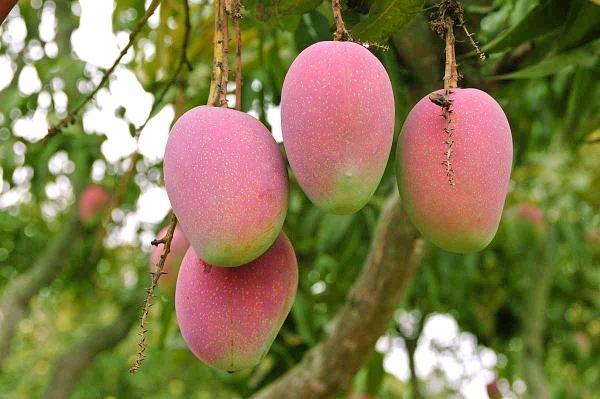Plantparadise
Suvarnarekha Mango Grafted Plant|Grafted Suvarnarekha Mango Plant Online
Suvarnarekha Mango Grafted Plant|Grafted Suvarnarekha Mango Plant Online
Regular price
Rs. 550.00
Regular price
Rs. 850.00
Sale price
Rs. 550.00
Unit price
per
Couldn't load pickup availability
The Suvarnarekha Mango (Mangifera indica) is a prized variety known for its unique appearance and delightful taste. Grafted Suvarnarekha mango plants combine the resilient rootstock of one mango variety with the exceptional fruit-bearing qualities of the Suvarnarekha variety, ensuring better growth, disease resistance, and fruit production.
Appearance:
- Tree Size: Grafted Suvarnarekha mango trees are typically more compact and manageable compared to seed-grown trees, making them ideal for home gardens and orchards.
- Leaves: The leaves are lanceolate, glossy, and dark green with a leathery texture.
- Flowers: The tree produces small, fragrant, pinkish-white flowers in large panicles.
Fruit:
- Shape and Size: Suvarnarekha mango fruits are medium to large, oblong, and sometimes slightly curved.
- Skin: The skin is smooth with a striking blend of yellow and red hues when ripe, giving it a distinctive and attractive appearance.
- Flesh: The flesh is golden-yellow, juicy, and fiberless, offering a delightful eating experience.
- Taste: The flavor is rich, sweet, and slightly tangy with a unique aroma, making it highly sought after in the market.
Growth and Care:
- Climate: Prefers tropical and subtropical climates with well-drained soil and full sun exposure.
- Watering: Requires regular watering, especially during dry spells, but should not be waterlogged.
- Fertilization: Benefits from balanced fertilization, particularly nitrogen, phosphorus, and potassium.
- Pruning: Regular pruning helps maintain the tree’s shape, promotes healthy growth, and improves air circulation.
Benefits of Grafted Plants:
- Early Fruiting: Grafted Suvarnarekha mango plants tend to bear fruit earlier than those grown from seed.
- Uniformity: Consistent quality and size of fruits due to the controlled grafting process.
- Disease Resistance: Enhanced resistance to common mango diseases and pests due to the hardy rootstock.
Uses:
- Culinary: Consumed fresh, used in desserts, smoothies, and salads. Also processed into juices, jams, and dried products.
- Nutritional: Rich in vitamins A and C, fiber, and antioxidants.
Planting Tips:
- Site Selection: Choose a location with plenty of sunlight and good air circulation.
- Soil Preparation: Amend the soil with organic matter to improve fertility and drainage.
- Spacing: Allow adequate space between trees to ensure proper growth and sunlight penetration.
Materials
Materials
Shipping & Returns
Shipping & Returns
Dimensions
Dimensions
Care Instructions
Care Instructions






